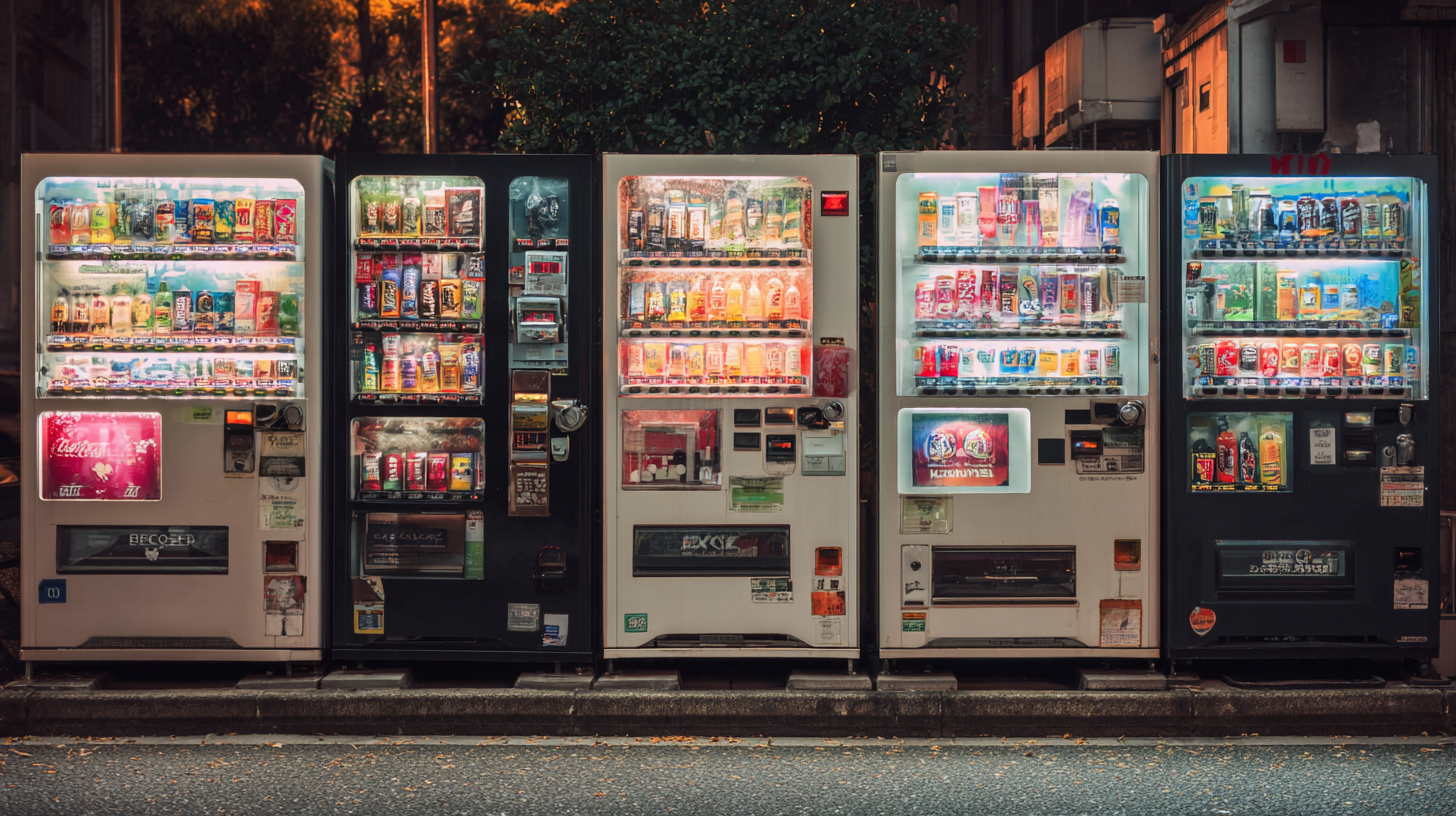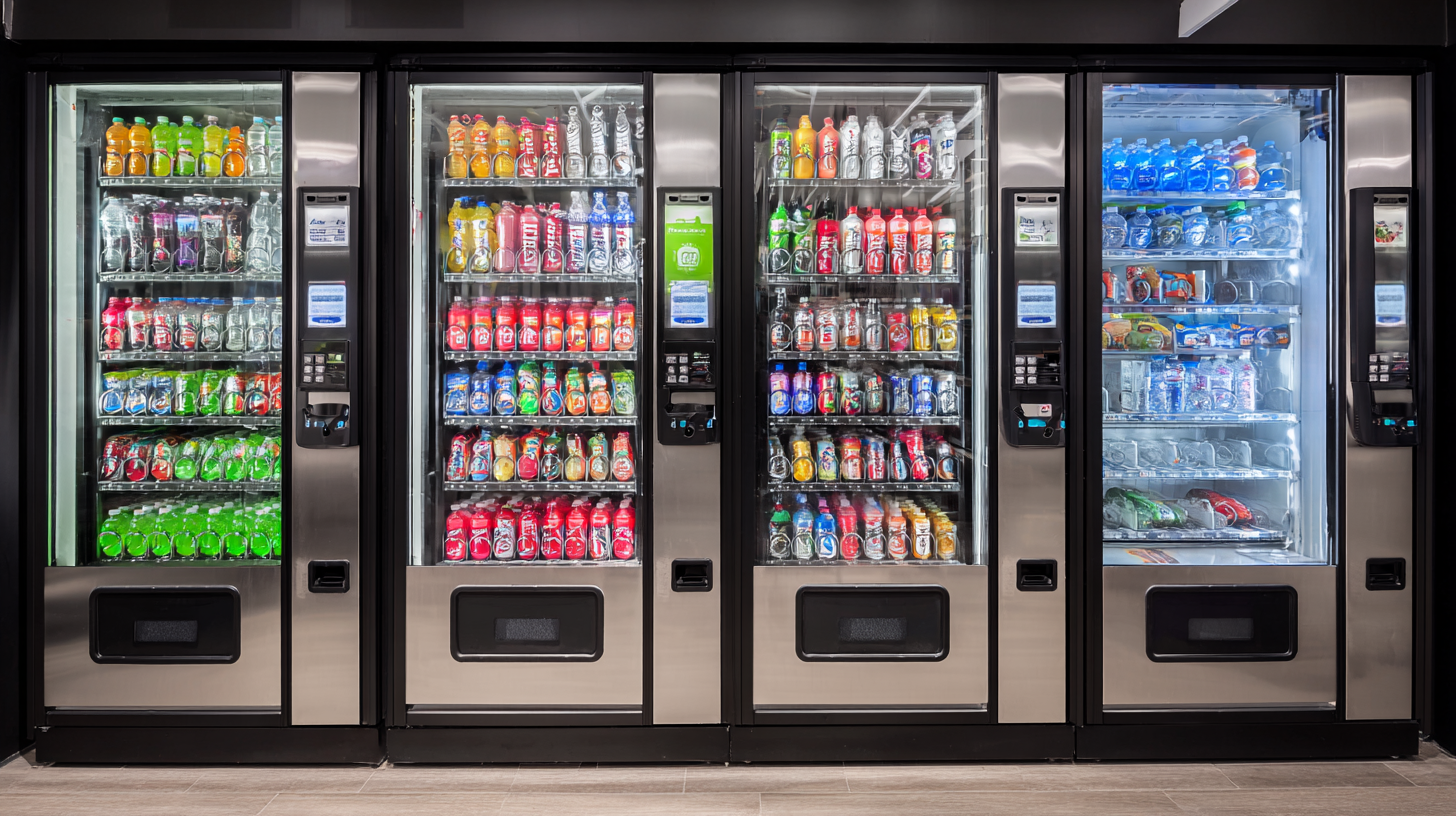Understanding the Evolution of Vending Equipment and Its Impact on Modern Retail
The landscape of modern retail is being redefined by the evolution of vending equipment, a revolution fueled by advancements in technology and changing consumer behaviors. According to a report by IBISWorld, the vending machine industry is projected to grow at an annual rate of 2.5% over the next five years, highlighting the increasing adoption of these automated retail solutions. With features such as cashless payment options, real-time inventory management, and customizable product offerings, today's vending equipment is not merely a convenience but a smart retail solution that meets the demands of a fast-paced lifestyle. As e-commerce continues to rise, integrating digital interactions with traditional vending systems has become essential. The shift towards a more integrated, tech-savvy retail environment underscores the importance of understanding how these innovations in vending equipment can simultaneously enhance customer experience and drive revenue in an increasingly competitive market.

Exploring the Historical Development of Vending Machines in Retail
The historical development of vending machines reveals a fascinating evolution that parallels changes in consumer behavior and technological advancements. Initially serving simple snack and drink functions, vending machines have transformed into sophisticated units that offer a wide variety of products, from fresh meals to electronics. This shift is driven by consumer demand for convenience and accessibility, leading to the proliferation of smart vending machines that utilize touchless payment options and advanced inventory management systems.
As we witness the growth of the global vending machine market, projected to reach significant figures by 2032, the impact of these machines on modern retail becomes even more pronounced. The rise of unmanned retail is indicative of a broader trend towards automation and self-service solutions in the shopping experience. Current innovations make vending machines not only a viable alternative to traditional retail but also a necessary component in busy urban environments, reshaping how consumers interact with products on the go.
Understanding the Evolution of Vending Equipment and Its Impact on Modern Retail
This bar chart illustrates the growth of vending machine sales in the United States over the past two decades, showcasing the historical development and increasing relevance of vending machines in modern retail. The data highlights significant market growth alongside technological advancements and consumer trends.
Analyzing Technological Advances in Vending Equipment
The vending equipment industry has witnessed significant technological advancements that are reshaping modern retail. For instance, the integration of contactless payment systems and mobile wallets has enhanced convenience, making vending machines a more appealing option for consumers. This shift is not just a passing trend; it has fueled remarkable growth, with the global smart vending machine market projected to surge from $11.47 billion in 2025 to $36.89 billion by 2032, reflecting a compound annual growth rate of 18.2%.
Moreover, developments in inventory management technology are optimizing the operational efficiency of vending machines. This enhanced capability allows for real-time tracking of stock levels, ensuring that popular products are readily available and reducing downtime. As the market evolves, the combination of these innovations is expected to maintain the momentum of the vending industry, positioning it as a key player in the retail landscape. With such advancements, businesses are better equipped to cater to the evolving needs of consumers, marking a new era in automated retail solutions.
Understanding the Evolution of Vending Equipment and Its Impact on Modern Retail - Analyzing Technological Advances in Vending Equipment
| Technology Type | Description | Impact on Retail | Year of Introduction |
|---|---|---|---|
| Cashless Payment Systems | Integration of mobile payment options (e.g., Apple Pay, Google Wallet) in vending machines. | Increased convenience for customers, leading to higher sales and faster transaction times. | 2015 |
| Smart Vending Machines | Vending machines with internet connectivity and real-time inventory tracking. | Better inventory management, reduced downtime, and personalized marketing opportunities. | 2018 |
| Touchscreen Interfaces | Interactive screens that allow users to browse products and place orders easily. | Enhanced user experience, leading to increased product sales and customer engagement. | 2014 |
| Healthy and Fresh Food Options | Vending machines stocked with fresh produce, salads, and healthy snacks. | Catering to health-conscious consumers and expanding the vending market. | 2016 |
| Data Analytics and Reporting | Utilization of data analytics for sales tracking and consumer behavior analysis. | Informed decision-making for inventory, marketing strategies, and location selection. | 2019 |
Assessing Consumer Behavior Changes Influenced by Vending Solutions
The evolution of vending equipment has significantly transformed consumer behavior, particularly in the context of modern retail. As convenience becomes a top priority for shoppers, the global smart vending machine market is projected to grow from $11.47 billion in 2025 to $36.89 billion by 2032, with a remarkable CAGR of 18.2%. This surge indicates a widespread acceptance of vending solutions as an essential retail component, providing 24/7 accessibility and immediate gratification for consumers seeking on-the-go purchases.

With the advancement of technology, vending machines are now equipped with features such as cashless payment systems, interactive displays, and personalized marketing. These innovations cater to changing consumer preferences, particularly among younger generations who favor seamless and efficient shopping experiences. The integration of mobile apps and contactless payment options has further enhanced customer engagement, encouraging impulse buys and repeat usage.
Tip: To capitalize on these trends, retailers should consider incorporating smart vending solutions into their strategy. This could not only attract tech-savvy consumers but also streamline operations by reducing the need for in-store staff. Additionally, focusing on product variety and sustainability can create a more appealing vending experience that resonates with environmentally conscious shoppers.
Evaluating the Role of Vending Machines in the Omnichannel Retail Experience
Vending machines have transformed significantly from simple snack dispensers to sophisticated retail solutions that play a vital role in the omnichannel retail experience. According to a report by IBISWorld, the vending machine industry is expected to grow by 5.3% annually over the next five years, reflecting a growing demand for convenience and instant access to products. This evolution is driven by advancements in technology, including cashless payment options and smart inventory management systems, which allow for a more seamless shopping experience.
Incorporating vending machines into an omnichannel strategy not only enhances customer engagement but also provides valuable data analytics. The Global Vending Alliance notes that 53% of consumers are more likely to purchase from a retailer that offers a multi-channel shopping experience. Vending machines can serve as a bridge between physical stores and online platforms, offering instant gratification for consumers while providing retailers with a new revenue stream. This integration highlights the importance of vending machines in modern retail, allowing brands to interact with customers at various touchpoints and meet their evolving shopping preferences.

Future Trends in Vending Equipment and Their Expected Impact on Retail Dynamics
The global smart vending machine market is projected to grow from $11.47 billion in 2025 to $36.89 billion by 2032, representing a substantial compound annual growth rate (CAGR) of 18.2%. This surge in market size is indicative of shifting consumer behaviors and the increasing integration of technology into retail environments. Smart vending machines, equipped with features like cashless transactions, touchless interfaces, and real-time inventory tracking, are set to revolutionize last-mile retail solutions.
As urban lifestyles continue to evolve, the demand for convenience-driven options will likely increase. The intersection of IoT (Internet of Things) technologies and vending equipment is expected to lead to more personalized consumer experiences. For instance, these machines can utilize data analytics to customize product offerings based on customer preferences and buying trends. Industry reports highlight that by harnessing big data, retailers can optimize restocking processes and enhance customer engagement, thereby reshaping modern retail dynamics in significant ways.

